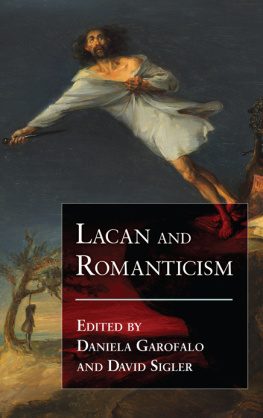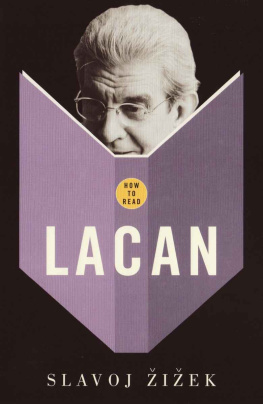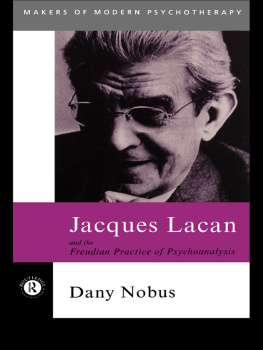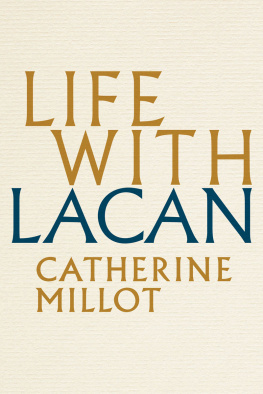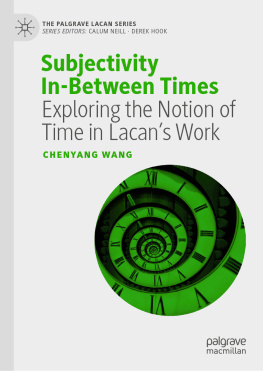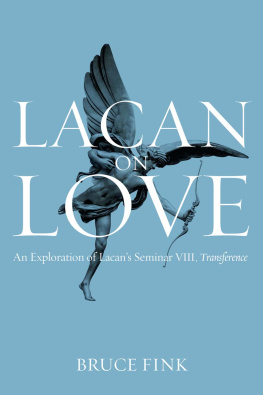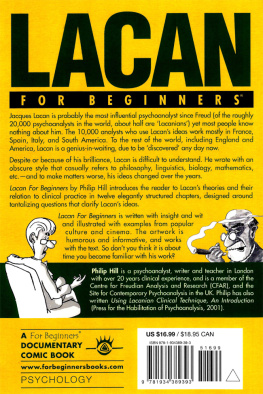LACAN AND ROMANTICISM
SUNY SERIES , S TUDIES IN THE L ONG N INETEENTH C ENTURY
Pamela K. Gilbert, editor
L ACAN AND
R OMANTICISM
EDITED BY D ANIELA G AROFALO
AND D AVID S IGLER
Cover image: Leonardo Alenza y Nieto (18071845), Stiras del suicidio romntico, nineteenth century, painting, oil on canvas. Madrid, Museo del Romanticismo.
Published by State University of New York Press, Albany
2019 State University of New York
All rights reserved
Printed in the United States of America
No part of this book may be used or reproduced in any manner whatsoever without written permission. No part of this book may be stored in a retrieval system or transmitted in any form or by any means including electronic, electrostatic, magnetic tape, mechanical, photocopying, recording, or otherwise without the prior permission in writing of the publisher.
For information, contact State University of New York Press, Albany, NY
www.sunypress.edu
Library of Congress Cataloging-in-Publication Data
Names: Garofalo, Daniela, 1968- editor. | Sigler, David, 1977- editor.
Title: Lacan and Romanticism / edited by Daniela Garofalo and David Sigler.
Description: Albany : State University of New York Press, [2019] | Series: SUNY series, studies in the long nineteenth century | Includes bibliographical references and index.
Identifiers: LCCN 2018020087| ISBN 9781438473451 (hardcover : alk. paper) | ISBN 9781438473475 (ebook)
Subjects: LCSH: RomanticismGreat Britain. | Lacan, Jacques, 1901-1981Influence. | Psychoanalysis and literature. | English literature19th centuryHistory and criticism. | English literature18th centuryHistory and criticism. | Psychiatry in literature.
Classification: LCC PR457 .L35 2019 | DDC 820.9/145dc23 LC record available at https://lccn.loc.gov/2018020087
10 9 8 7 6 5 4 3 2 1
CONTENTS
DANIELA GAROFALO AND DAVID SIGLER
PAUL A. VATALARO
RITHIKA RAMAMURTHY
COLIN CARMAN
DANIELA GAROFALO
ZAK WATSON
ED CAMERON
DAVID SIGLER
MATT FOLEY
EVAN GOTTLIEB
ILLUSTRATIONS
ACKNOWLEDGMENTS
T HE E DITORS gratefully acknowledge the support of our colleagues at the University of Oklahoma and University of Calgary. We offer thanks for the expert editorial work performed by Amanda Lane-Camilli and Chelsea Miller at SUNY Press, that of series editor Pamela K. Gilbert, and the immensely helpful and thoughtful advice of the anonymous readers. We thank Callie Craig for her timely research assistance and the office of the vice president for research at the University of Oklahoma for facilitating that assistance. We gratefully acknowledge the comradeship of our colleagues Anna Kornbluh, Joel Faflak, David Collings, and Anna Shajirat. We appreciate colleagues met and conversations had at the LACK conferences in 2016 and 2017, and especially Todd McGowans work in building the LACK community. We thank The Rabbit Hole in Colorado Springs for its hospitality on several occasions as we, in league with Colin Carman, talked through our plans for this project and ideas-in-progress.
Daniela Garofalo would additionally like to thank her colleagues at the University of Oklahoma for their feedback on her work on Jane Austen and Lacan, as well as Molly Anne Rothenberg for her many insights on these two remarkable figures. Finally, she thanks Derek Hook for his wonderfully enlightening class on Lacan at Birkbeck College, University of London.
David Sigler would additionally like to thank Russell Grigg for generously welcoming him (me) into his seminar on Psychoanalysis and Sexualities in the spring of 2017, David L. Clark for his wise advice on a draft of
I NTRODUCTION
Lacan and Romanticism
DANIELA GAROFALO AND DAVID SIGLER
W HY Lacan and Romanticism? At a time, within Romantic studies, in which the turn to historicism has just begun to loosen its three-decades-long grasp on the field, and in which scholars have meanwhile been variously bemoaning or acclaiming the demise of theory, the study of Lacan with Romanticism might seem like a quixotic enterprise. Confronted by the juggernaut of historicism, theory, some might argue, is dead. Yet some of the richest and most interesting work in literary and cultural studies, all the while, has remained thoroughly informed by theory, and new theoretical praxes have emerged in the last decade or so. As Vincent Leitch writes: [D]espite all the talk about posttheory and after theory that has been floating around for several decades, there is a theory renaissance underway. Jacques Lacanengine of the twentieth centurys first theory renaissance with his ever-controversial return to Freudhas been an important part of that resurgence within the study of Romanticism and within literary studies more broadly.
In particular, Lacanian theory has experienced a wide-ranging revival since the 1990s, especially with the publication of Slavoj ieks groundbreaking work. It emphasized (and emphasizes) how and why Lacan matters for a politicized study of culture. Concomitantly, over the last ten years, beginning with Bruce Finks translation of Lacans complete crits and then with the publication of Lacans other seminars and lectures, scholars have begun to move beyond Lacans most familiar writings, such as the oft-anthologized essays on The Mirror Stage and The Agency of the Letter in the Unconscious, to explore the many unfamiliar corners of Lacans thought.
Several books published in the last few decades have been dedicated to the purpose of aligning Lacan with current literary and cultural studies. nature of texts. Lacanians are not alone in this effort, but are an important part of a turn away from primarily historicist and new historicist approaches. There was a time when Lacanian studies of Romanticism would face inevitable, and often just, accusations of peddling seemingly timeless mythsand thus ideology. To speak of a psychoanalysis avant la lettre was considered anachronistic and thus intolerable. Psychoanalytic work in Romanticism has, in recent decades, taken seriously these concerns, adapted its methodologies, and accordingly upended such conclusions: what is more obvious today is that psychoanalytic ideas emerged as a discursive development of the late eighteenth and nineteenth centuries, and that the Romantic focus on the psyche and the unconscious demanded new ways of reading and storytelling. Romanticism, in Britain and throughout Europe, was closely involved in the representation, analysis, and production of human desireand, as Colin Carmans essay in this volume indicates, desire beyond the boundaries of the humanand thus in many ways inaugurated psychoanalytic discourses.
New historicist approaches to Romanticism, as pioneered by critics such as Jerome McGann and Marjorie Levinson, have tended to see literary texts as reactions to a cultural context that informs them even (or especially) when the writer represses or ignores their political and historical milieu. the critic tends to find that the context is more interesting than text. When read as symptoms of their culture, texts indicate aspects of a pervasive, if dynamic, context, which thoroughly shapes them.
Lacanian readings can be just as invested in historical particularity, but typically they focus on the text itself, finding that literature, painting, film, and other art forms importantly intervene in the symbolic order and do not merely reflect and react to it. Sharply breaking from traditions of psychoanalytic literary criticism focused on psychobiography, for Lacan it is out of the question to analyze dead authors. Instead, he recommends:

